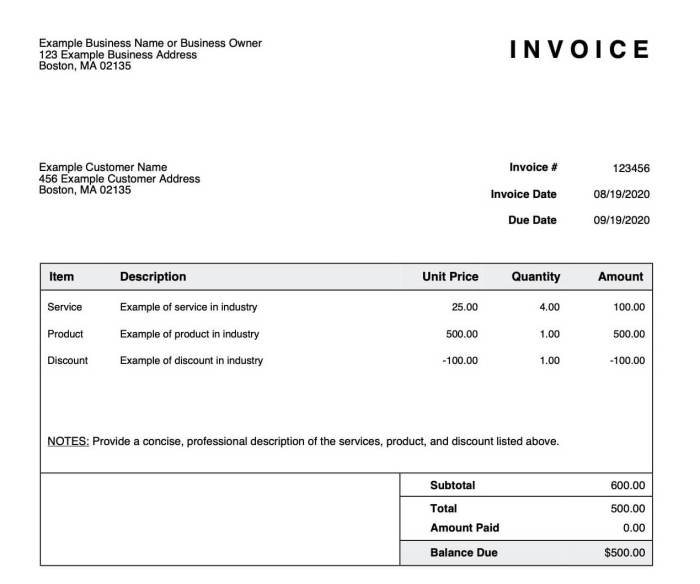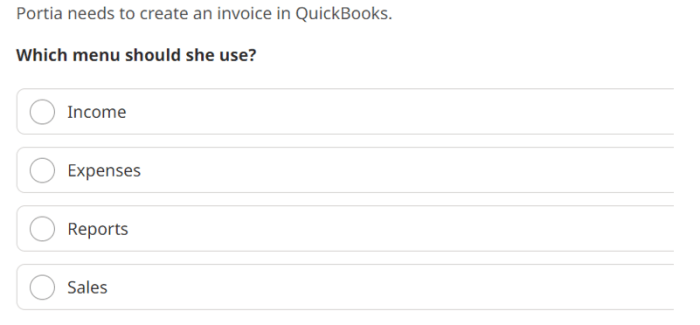Portia needs to create an invoice. This comprehensive guide will provide Portia with the knowledge and tools necessary to create professional, accurate, and effective invoices. From understanding the invoice creation process to leveraging invoice automation, this guide covers everything Portia needs to know to streamline her billing processes and ensure timely payments.
In this guide, we will explore the step-by-step process of creating an invoice, including essential elements, design considerations, and common pitfalls to avoid. We will also discuss invoice delivery and tracking techniques, as well as the importance of invoice reconciliation and payment methods.
Finally, we will examine the benefits and features of invoice automation software, empowering Portia to improve efficiency and reduce errors in her billing processes.
Invoice Creation Process
Creating an invoice is a crucial step in the billing process. A well-crafted invoice ensures accurate and timely payments, maintains good customer relationships, and provides a clear record of transactions.
The invoice creation process typically involves the following steps:
- Gather necessary information, such as customer details, product or service descriptions, quantities, and prices.
- Choose an appropriate invoice template or design.
- Enter the collected information into the invoice.
- Calculate and include any taxes, discounts, or other charges.
- Assign a unique invoice number and due date.
- Proofread and review the invoice for accuracy.
- Send the invoice to the customer.
Common Pitfalls to Avoid
- Inaccurate or incomplete information
- Unclear or confusing language
- Lack of proper formatting and organization
- Delays in invoice delivery
- Incorrect calculations or payment terms
Invoice Content and Structure

An effective invoice should include the following essential elements:
- Company name and logo
- Customer name and contact information
- Invoice number and date
- Description of products or services provided
- Quantity, unit price, and total amount for each item
- Subtotal, taxes, discounts, and other charges
- Total amount due
- Payment terms and instructions
- Contact information for inquiries
Purpose and Importance of Each Element
- Company information: Identifies the business issuing the invoice.
- Customer information: Specifies the recipient of the invoice.
- Invoice number and date: Helps track and manage invoices.
- Product/service description: Clearly states what is being billed.
- Quantity and pricing: Provides details of the transaction.
- Subtotal and charges: Calculates the total amount before taxes and discounts.
- Total amount due: Indicates the final amount owed.
- Payment terms: Artikels the accepted payment methods and deadlines.
- Contact information: Allows customers to contact the business for clarifications or payments.
Invoice Design and Customization
Professional invoice templates can enhance the credibility and impact of your invoices. They provide a consistent and visually appealing layout that reflects the company’s brand.
Benefits of Invoice Customization
- Reflects company branding
- Makes invoices more visually appealing
- Increases brand recognition
- Improves customer satisfaction
Tips for Invoice Customization
- Use company colors and logos.
- Choose clear and easy-to-read fonts.
- Organize information in a logical and structured manner.
- Include a call-to-action, such as a “Pay Now” button.
Invoice Delivery and Tracking: Portia Needs To Create An Invoice

Invoices can be delivered to customers through various methods:
- Online portals
Importance of Invoice Tracking
- Monitors invoice status
- Identifies unpaid invoices
- Helps prevent revenue loss
Techniques for Effective Invoice Tracking
- Use an invoice tracking system.
- Set up email notifications for invoice status updates.
- Regularly review accounts receivable reports.
Role of Invoice Portals
- Provide a secure and convenient way to deliver invoices.
- Allow customers to view and download invoices.
- Enable online payments and invoice tracking.
Invoice Payment and Reconciliation
Customers can make invoice payments through various methods:
- Bank transfer
- Online payment platforms
- Credit cards
- Checks
Invoice Reconciliation Process
- Matching payments to invoices
- Verifying amounts and details
- Updating accounting records
Importance of Invoice Reconciliation
- Ensures accurate financial records
- Prevents errors and discrepancies
- Improves cash flow management
Tips for Timely and Accurate Invoice Payments
- Set clear payment terms.
- Provide multiple payment options.
- Offer incentives for early payments.
- Send payment reminders regularly.
Invoice Automation
Invoice automation streamlines the invoice creation and processing process, saving time and reducing errors.
Advantages of Invoice Automation
- Faster invoice creation
- Improved accuracy
- Reduced labor costs
- Enhanced customer satisfaction
Popular Invoice Automation Software, Portia needs to create an invoice
- FreshBooks
- QuickBooks
- Xero
How Invoice Automation Improves Efficiency and Reduces Errors
- Automates repetitive tasks.
- Eliminates manual data entry.
- Integrates with other business systems.
- Provides real-time invoice tracking.
Essential Questionnaire
What are the essential elements of an invoice?
An invoice should include the following essential elements: invoice number, invoice date, customer information, description of goods or services, quantity, unit price, total amount, payment terms, and contact information.
What are the benefits of using professional invoice templates?
Professional invoice templates can help Portia create invoices that are visually appealing, consistent, and compliant with industry standards. They can also save time and effort by providing a pre-formatted layout and reducing the risk of errors.
What is invoice automation and how can it benefit Portia?
Invoice automation is the use of software to automate the invoice creation and processing process. This can save Portia time and effort, reduce errors, improve efficiency, and enhance customer satisfaction.